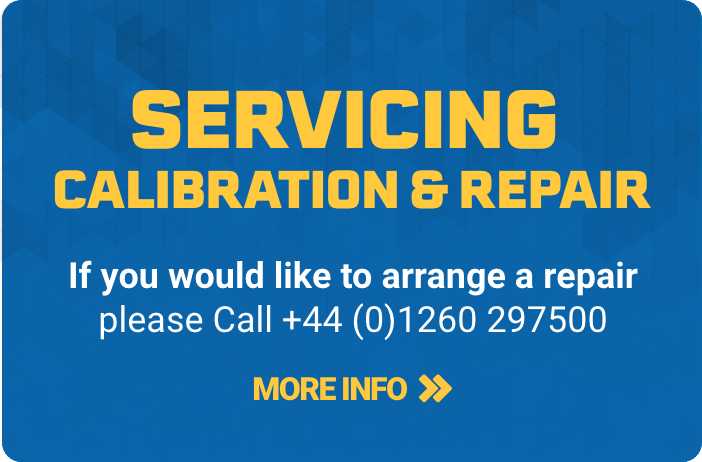Air hammers, sometimes known as pneumatic hammers or air chisels, are versatile pieces of equipment found in the toolkits of many DIY enthusiasts and professionals.
But what is this powerful device used for?
From removing stubborn bolts and chiselling away concrete to driving nails and shaping metal, the air hammer's capabilities are next to boundless. Additionally, you can use the tool for DIY projects within your home and perform tasks in the garage, which is why they are popular amongst mechanics.
Before you purchase an air hammer, continue reading this article in which we delve deeper into the air hammer uses. Discover the typical applications of the tool and have more knowledge about the type of air hammer required.
How Do Air Hammers Work?
A pneumatic air hammer requires a compressed air source to function, typically provided by an air compressor, which pressurises and stores it in a tank.
When you fire an air hammer, the compressed air drives its piston forward in a hammer-like motion to grind or chip away at tough materials.
The barrel houses the piston. The longer the barrel, the more powerful blows you will achieve. This is because a longer barrel allows the piston more time to reach a high velocity, equalling a long stroke for each blow.
What is an Air Hammer Used for?
Removing Paint

When it comes to efficiently removing paint from surfaces, an air hammer is a valuable tool to have. With its ability to deliver high impact, an air hammer can save you significant time and effort when preparing a surface.
This tool's effectiveness is helped by working with different chisels. For example, the air hammer with 5 shaped chisels allows for optimum versatility when approaching tasks like removing paint.
Different chisel designs cater to various sculpting techniques and materials. Whether you're looking for flat chisels for shaping broad surfaces, point chisels for creating textures, or gouge chisels for carving out recesses, the range of attachments available ensures that you have the right tool for the job.
By simply positioning your chosen chisel against the painted surface and activating the tool, the rapid and precise blows break the paint's bond, causing it to flake off.
To maximise the effectiveness of paint removal, you must adjust the speed and pressure settings of the air hammer.
Higher speed settings are ideal for tackling thick or stubborn paint layers, while lower speeds provide better control for delicate surfaces.
Additionally, adjusting the pressure can help you achieve the desired level of impact force.
It is advisable to start with lower settings and gradually increase them until you find the optimal combination that effectively removes the paint without damaging the underlying surface.
Sculpting Stone or Wood

An air hammer is not just limited to removing paint; it can also be an excellent tool for sculpting stone or wood in creative DIY projects or professional atmospheres. Its unique features make it a go-to choice for artisans looking to add intricate detailing to their creations.
One of the top advantages of using an air hammer for sculpting is its precision and level of control, allowing for accurate cuts and shaping.
Additionally, an air hammer can quickly remove large amounts of material, which is an advantage when working on large wooden or stone sculptures.
Cutting or Shaping Metal

An air hammer is an effective tool for various metalworking tasks when paired with appropriate cutting or shaping attachments, such as a chisel or a cutting blade.
The air hammer's high-velocity impact and the attachment's sharp cutting edge allow the user to cut precisely and efficiently.
If you need to shape metal pipes or solid metal objects, use your air hammer with a ball pein hammer or a forming tool. The repetitive blows from the air hammer will enable you to deliver a controlled force.
Many workers use the above method when forming curves or creating indentations in metal.
Due to their ability to effectively shape and smooth metal, air hammers are often found in metalworking shops and used on various metal materials, such as copper, steel, and aluminium.
Installing or Removing Automotive Parts

As mentioned, mechanics often use air hammers, so you can generally find the tool in garages and auto repair shops.
The tool simplifies installing and removing automotive parts, particularly if the user is working with suspension and brake components.
If you’re an avid car enthusiast or mechanic, you can use an air hammer to loosen stubborn bolts. Even if you have rusted fasteners, you can easily remove these when using an air hammer.
Plus, the tool will help reduce the physical strain you typically endure when conducting automotive repair, enhancing your productivity.
Demolishing Concrete or Masonry

Lastly, if you are involved in demolition projects, an air hammer is a tool that can make light work of breaking up concrete or chipping away at masonry surfaces.
From breaking up a concrete slab to removing old tiles, an air hammer will help you easily tackle these tough materials.
Air hammers can penetrate concrete, mortar, stone, tiles, and many other robust materials.
To summarise, air hammers can be used for multiple tasks, such as removing paint, shaping stone or wood, cutting and smoothing metal, installing or removing automotive parts, and demolishing concrete or masonry, to name a few.
Air hammers are versatile and can help you save time, whether working in a professional environment or on DIY projects.
As with any project requiring tools, you should always ensure you have the correct PPE (personal protective equipment), such as gloves and eye goggles.
Looking to add to your toolbox? Heamar offers various air hammers, chisel sets, and other types of power tools.
























